#73 in Vietnam
Bún Giò: Basic Information
Pronunciation
Alternative Name(s)
Dish Type
Course
Mealtime
Popular Variations
Bún Giò: Ingredients and Preparation
Main Ingredients
Main Cooking Method
Preparation Process
Bún Giò: A Deep Dive
Cultural Significance
Taste
Texture
Aroma
Color
Serving Style
Serving Temperature
Accompaniment
Occasions
Seasons
Special Diets
Calories
Popularity
Popular Similar Dishes
- Bún Chả Cá
- Bánh Canh Giò Heo
Popular Dining Area
Bún giò is simply a Vietnamese noodle soup specialty that is made with rice noodles, pork bones, and trotters.
Commonly, all the elements are traditionally served in a savory broth with toppings such as pork sausage or Vietnamese meatballs, called mọc.
Ideally, this street-food noodle soup takes the pork trotter as the main highlight while the pork bones form the main profile for the broth.
Additionally, the lemongrass, shallot, onion, minced chili, and spices help the broth become more flavorful.
For serving, bún giò often comes with a serving of various vegetables like banana blossom, lettuce, bean sprouts, or morning glory to add a touch of freshness to the rich soup.
Interestingly, the dish doesn’t have a clear origin, yet it’s popular across the region in Vietnam.
Don’t forget to tune in for all the advantages and disadvantages of bún giò that people often encounter when eating it.
Also, I’ll answer some of your common concerns about bún giò before introducing some dishes that are similar to it.
Key Points
Bún Giò Images
Pros and Cons of Eating Bún Giò
Here are a few details regarding the positive and negative traits of bún giò when consumed:
Pros
Cons
Then, make sure you don’t miss some of the inquiries that people often have about bún giò to expand your knowledge about this warm noodle dish.



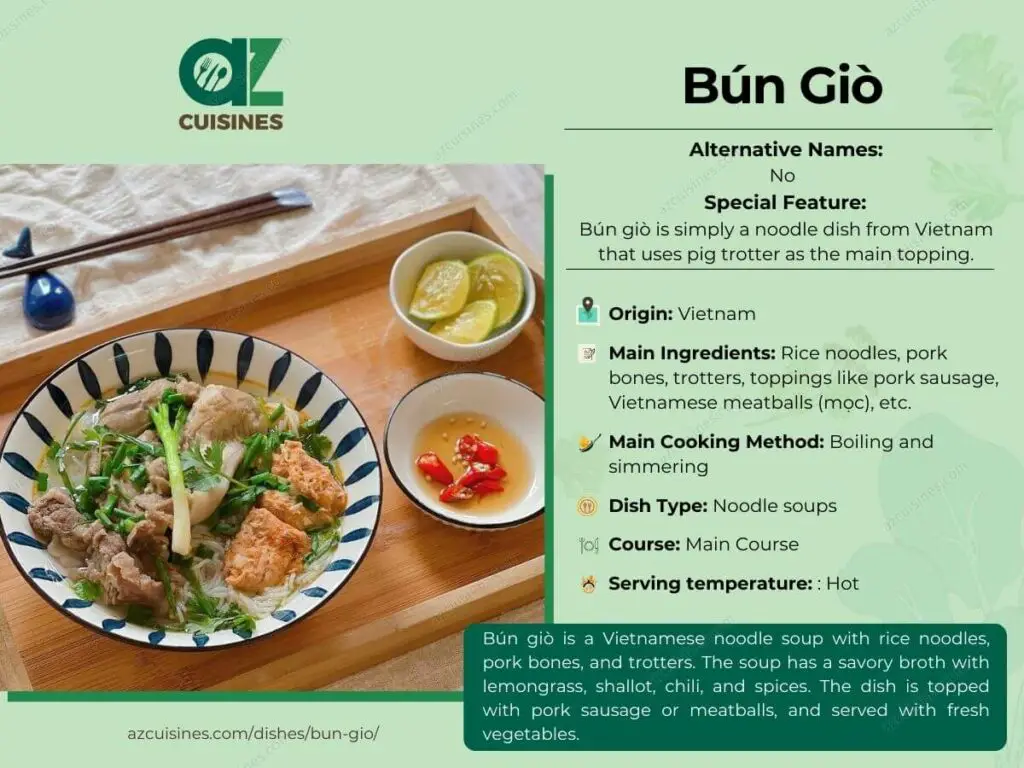
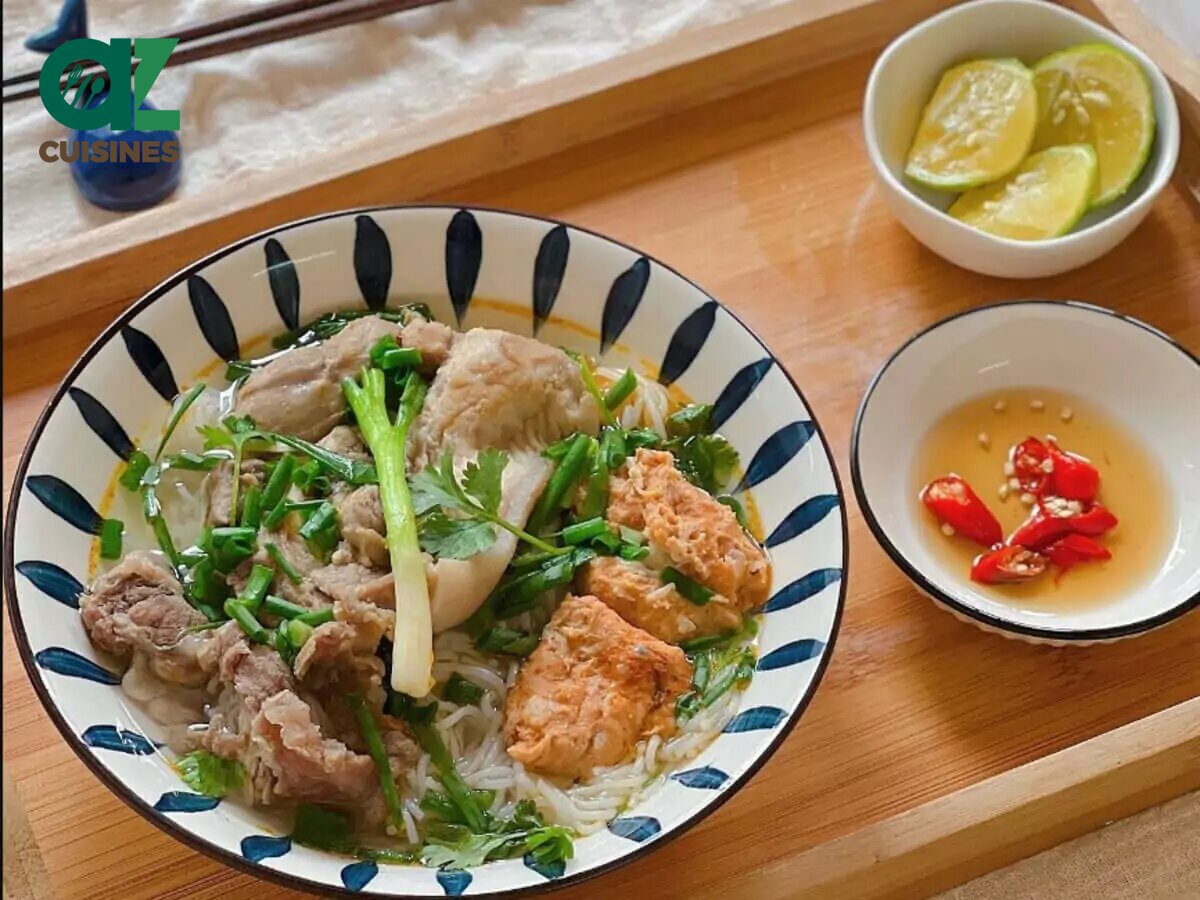
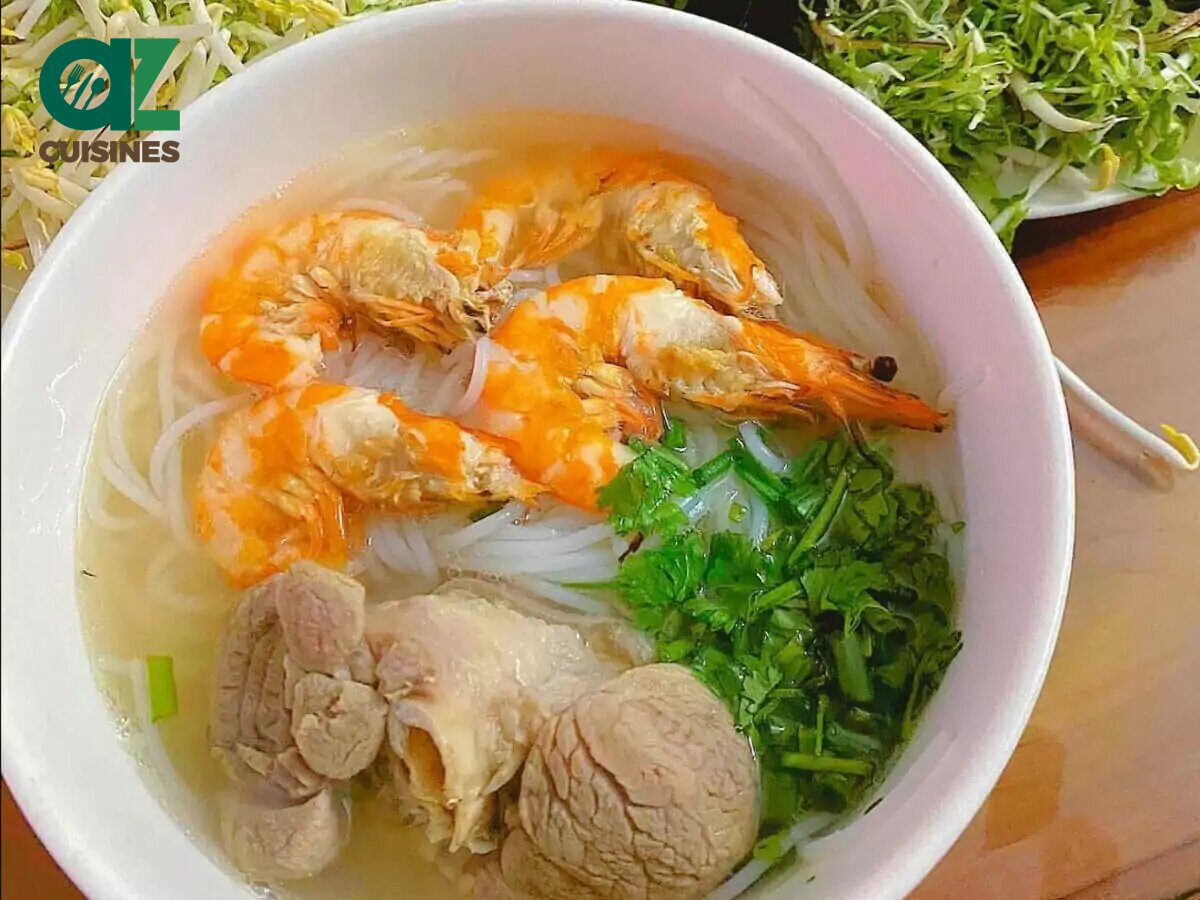
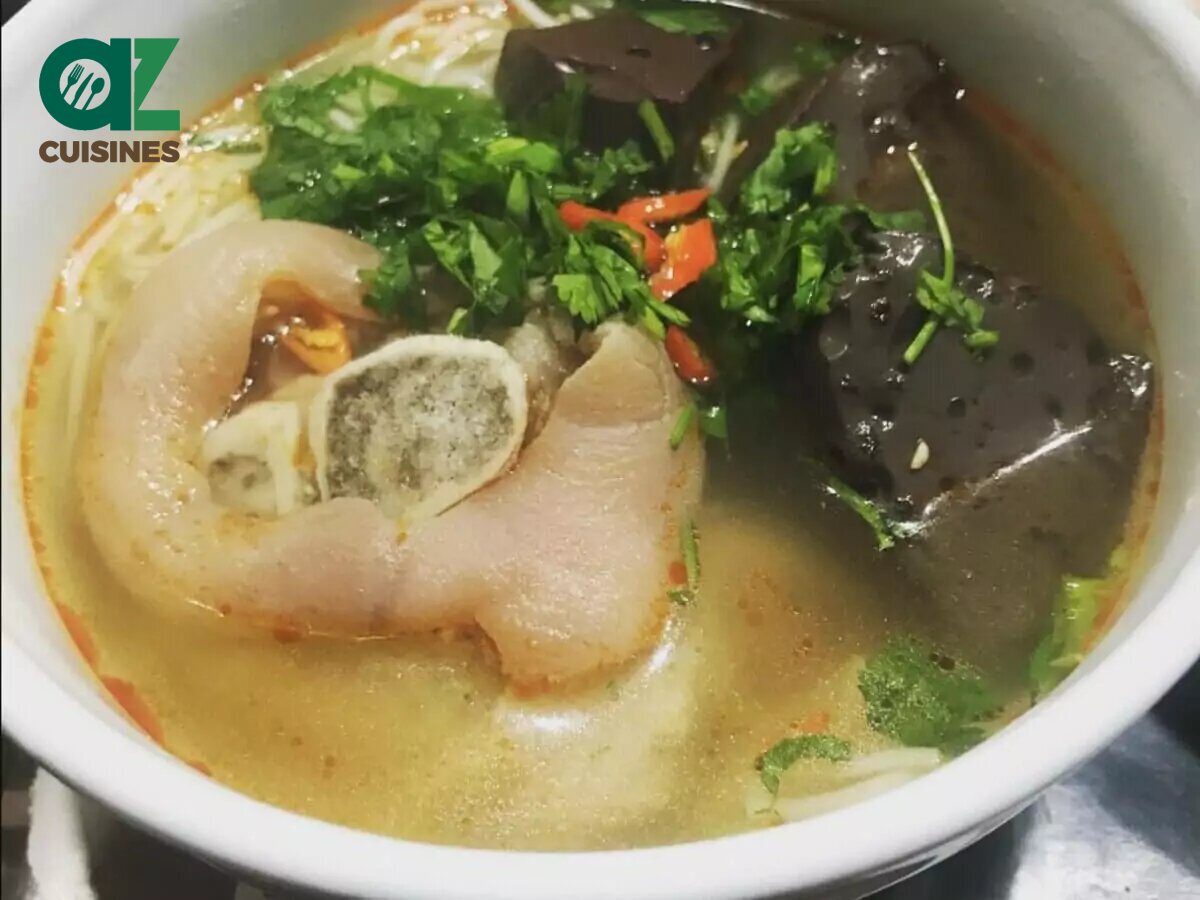

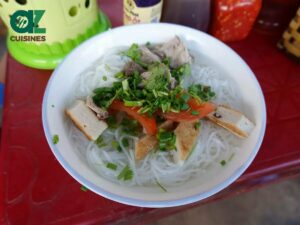
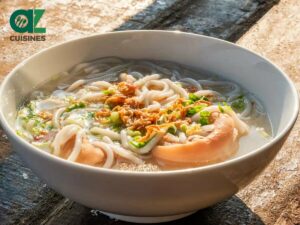
Truc Tran (Kris)
Senior Food Editor
Expertise
Home Cooking, Meal Planning, Recipe Development, Baking and Pastry, Food Editor, Cooking-video Maker, Vietnamese Food Evaluation Expert
Education
Truc Tran (Kris), an experienced food writer and editor, is great at exploring and describing global cuisines, from simple street food to fancy dining. In her writing, she skillfully mixes different flavors, cooking methods, and culinary traditions, showing the unique character of various cultures through their food and drinks. On azcuisines.com, Kris highlights her knowledge, especially in Asian cuisine and worldwide traditional dishes.